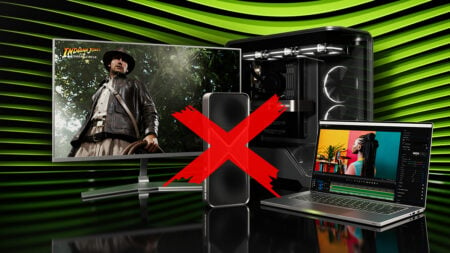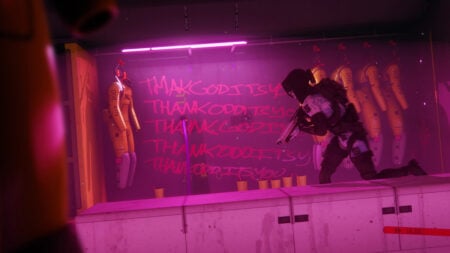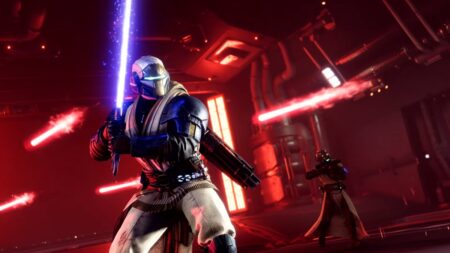Good night, good luck. An extremely simple catch phrase for that was backed up by an even simpler premise. I would venture to say that not many people would expect Techland’s Dying Light, a modern-day survival horror classic, to have cultivated such a large audience and become the runaway hit it is today. The game’s elevator pitch, with its big open world, parkour during the day, and run for your life at night, had become synonymous with the franchise, and Kyle Crane had become ingrained in the minds of everybody who played the original. Now, years later, he is back, starring in a DLC turned standalone open world adventure that evolves the sequel’s core gameplay, but harkens back to the world, characters, and atmosphere that made the original a cult phenomenon.
We had the chance to pick the brain of Tymon Smektala, the Dying Light Franchise Director, about Dying Light: The Beast, and everything that went into its creation. The interview has been edited for clarity.
TNS Interview With Tymon Smektala

David, The Nerd Stash Reviews Editor: With the feedback some players shared about Dying Light 2, especially around launch, many fans were yearning for more Kyle Crane and a return to gameplay mechanics from the original. How much of that sentiment was mirrored internally by the team? I imagine there’s a balance between the excitement of forging new ground and honoring the characters and features players loved.
Tymon Smektala, Dying Light Franchise Director: With Dying Light 2: Stay Human, we explored a broader, more action-forward take, but a big slice of our community kept telling us how much they missed the raw survival horror tension, the physics-based melee combat, grounded parkour, and, of course, Kyle.
Internally, many of us felt the same. Dying Light: The Beast is our answer: a deliberate return to survival horror roots, tighter resource pressure, nastier nights, and the emotional anchor of Kyle Crane – without discarding the lessons we learned on movement, readability, and encounter design in Dying Light 2: Stay Human. It’s not nostalgia for nostalgia’s sake; it’s about evolving the parts fans loved most. No other project taught us more about staying true to the series’ core than this one.
TNS: Was there a single moment during development when the team realized that moving forward with The Beast as a standalone title was clearly the right decision for the scope and vision of the project?
Tymon: Yes – the day we confirmed Roger Craig Smith could return as Kyle Crane and we dropped his first lines into a playable build. The entire feeling of the project shifted. Very quickly, the design, art, and narrative “exploded” in scope; every department got so excited to want to do more – that’s why the new map grew so much and got so diverse, that’s why Crane’s beast-like powers got a dedicated skill tree, that’s why we created so many cutscenes, etc. The examples are numerous. From this moment on Dying Light: The Beast got its unique identity and deserved to stand on its own.
TNS: We’ve played hundreds of hours of Dying Light, and one thing that still sticks with us years later is the incredible environmental storytelling.
I remember a rooftop that had a message saying three children were alive inside — but the “three” was crossed out and replaced with “two.” The tragedy of the electric fence, and survivors stranded with no way off… Many memes poke fun at horror games using blood writing on the walls, but Dying Light has always done a phenomenal job with subtle, passive storytelling through sheer observation.
What’s the process like for crafting those kinds of “silent” stories and trusting players to discover them without overt guidance?
Tymon: We start with small, human premises. “Who lived here, what were they trying to do in their last hours, what went wrong?” and write a micro-narrative before a single prop is placed. Level design, narrative, and art then iterate together: objects layout, lighting, blood patterns, children’s drawings on walls, a note with a torn corner – everything is chosen to imply cause and effect. Our team took it as a professional ambition to handcraft every square inch of the map, and it truly shows.
TNS: With this being the third standalone Dying Light title, how mindful were you of onboarding new players? Are there elements you feel are widely recognized by the broader gaming community, given the franchise’s popularity?
Tymon: Onboarding was very important. But I’m quite confident to say that Dying Light: The Beast is fully playable without prior knowledge. We maintain the gameplay mechanics of the series intact – including first-person parkour, day/night gameplay changes, looting, and crafting – and acknowledge that they may be difficult to grasp at first. But we introduce all of them one by one with modernized tutorials that explain them at a very good pace. Also, Kyle Crane himself is rediscovering the world after years of captivity, so the narrative naturally explains the important world-building elements. Veterans will catch all of the deep-cut lore callbacks; newcomers won’t feel lost.
TNS: Co-op is always a tricky topic. Many hardcore fans are wary of online or social elements, often assuming that great multiplayer and strong single-player storytelling can’t coexist. But Dying Light has long defied that expectation. How challenging is it to strike the right balance between fun, chaotic co-op, and emotionally impactful storytelling?
Tymon: The trick is to protect pacing and tension without neutering the chaos that makes co-op fun. We scale threats, including zombie numbers and damage, depending on the number of players. What’s important is that progression is shared – if you finish a mission in a friend’s game, that progress gets saved on your account as well – so co-op isn’t a “side mode,” it’s a valid way to experience the whole story.
TNS: Does the team look to other zombie-themed games, movies, and media for inspiration, or do you try to stay laser-focused on your own vision during development?
Tymon: We stay aware of the genre, but we don’t chase it. Our north star is to become the “ultimate zombie experience” as defined by our strategy for Dying Light. We do draw tone inspiration, not only from the genre – for Dying Light: The Beast we looked at things like Oldboy, the uncanny small-town weirdness of Twin Peaks or Stranger Things, the flesh-out visual designs of Attack on Titan. The mechanics and pacing are built around what makes Dying Light… Dying Light.
TNS: One of the most underrated aspects of modern games — especially in AAA — is sound design and score. Dying Light captivated me long before I played it, thanks to Pawel Błaszczak’s unforgettable OST. Olivier Deriviere carried that torch beautifully in the sequel. Now, with The Beast revisiting original mechanics and bringing back Kyle Crane, how important was it for the score to bridge the gap between old and new?
Tymon: Crucial. Pawel Blaszczak set a timeless mood with the first game; Olivier Deriviere evolves that in Dying Light: The Beast. The score is more restrained – often letting the ambiance take the stage, then it explodes dynamically during chases or key revelations. You’ll hear textural nods to the original synth melancholy woven into the new, dark, intimate sound design. It literally bridges eras: familiar enough to feel like “home,” different enough to match Crane’s changed psyche and the harsher survival focus.
TNS: Thank you for your time. One final question:
With the return of Kyle Crane, is there a message you’d like to share with the ultra-dedicated fans who’ve been with you since the beginning? And for those about to experience Dying Light for the first time with The Beast?
Tymon: To the veterans: thank you for never letting Kyle Crane fade away from your memory. Your passion brought him back, and we worked hard to honor that history while showing who he’s become. To newcomers: you can start here, and we really do hope you’ll find something very, very unique, unlike anything else that’s there in the market already.
What’s best about Dying Light: The Beast is that it is a sharp, focused survival horror – it’s a game that asks you to use your reflexes and skills the same as your brain and survival instinct, and if you learn to respect the night, improvise with what you have, you’ll find one of the most intense, human zombie stories out there. See you in Castor Woods, be with us at launch, and unleash the Beast with more than a million players that already have joined us!







